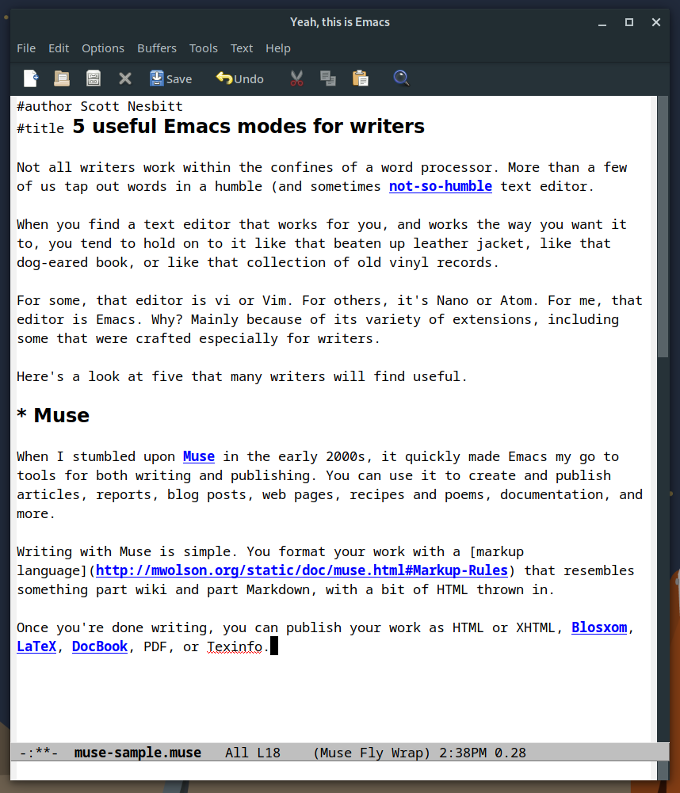Not all writers work within the confines of a word processor. More than a few of us tap out words in a humble (and sometimes not so humble[1]) text editor.
When you find a text editor that works for you, and works the way you want it to, you tend to hold onto it like that beaten up leather jacket, like that dog-eared book, or like that collection of old vinyl records.
For some, that editor is vi or Vim. For others, it's Nano or Atom. For me, that editor is Emacs. Why? Mainly because of its variety of modes, including some crafted especially for writers.
Here's a look at five Emacs modes that writers will find useful.
Muse
When I stumbled upon Muse[2] in the early 2000s, it quickly made Emacs my go-to tool for writing and publishing. You can use this mode to create and publish articles, reports, blog posts, web pages, recipes, poems, documentation, and more.
Writing with Muse is simple. You format your work with a markup language[3] that's similar to Markdown, with a bit of HTML thrown in for good measure. The markup takes some getting used to, but you should be able to adapt to it quickly.
Once you're done writing, you can publish your work as HTML or XHTML, Blosxom[4], LaTeX[5], DocBook[6], PDF, or Texinfo[7].

Org mode
Like Emacs itself, people use Org mode[8] for just about everything: from taking notes and maintaining their task lists[9], to writing and publishing blog posts, to creating presentation slides[10]. And a lot more.
For writers,

